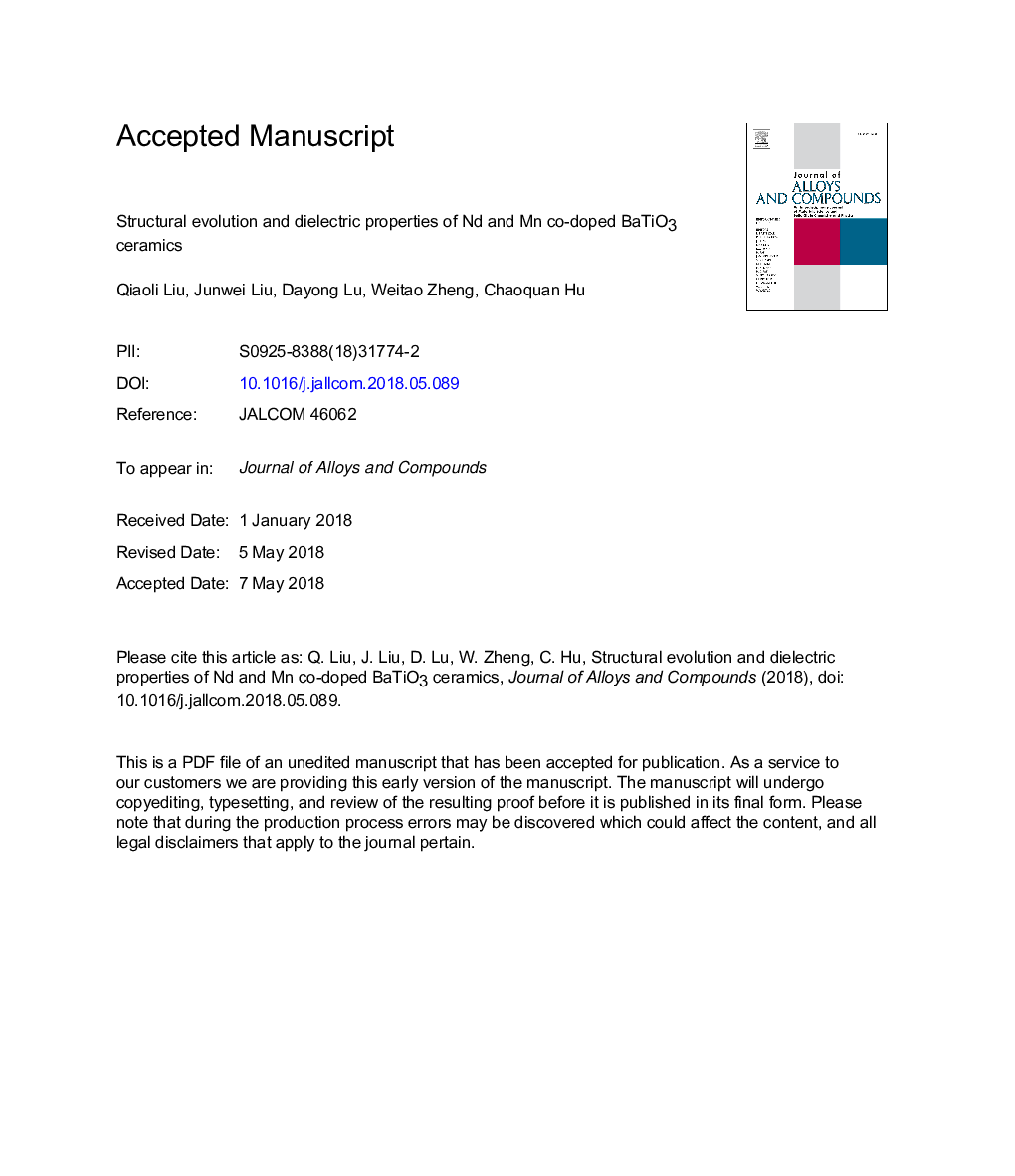| Article ID | Journal | Published Year | Pages | File Type |
|---|---|---|---|---|
| 7991019 | Journal of Alloys and Compounds | 2018 | 39 Pages |
Abstract
(Ba1âxNdx) (Ti0.97Mn0.03)O3 (BNTM) (xâ¯=â¯0.01, 0.02, 0.04, 0.06) ceramics were prepared using a conventional cold-pressing ceramic technique. The structure, valence state and dielectric properties were investigated using XRD, RS, SEM, TEM, EPR, and dielectric temperature and frequency measurements. XRD, RS analysis coupled with SEM and TEM observations indicate that the samples have a coexistence of tetragonal and hexagonal phase at room temperature as xâ¯â¤â¯0.02 and become a single phase in the tetragonal as xâ¯=â¯0.04 and in the cubic as xâ¯=â¯0.06 (air-sintered, 1400â¯Â°C/12â¯h). It reveals that Nd3+ ions can suppress hexagonal phase effectively and benefit the formation of single-phase ceramics. Improvement of dielectric properties is accompanied by the structural evolution. Particularly a cubic ceramic with xâ¯=â¯0.06, the dielectric-peak temperature is found to shift to room temperature, meeting the EIA Y5V specification with tanâ¯Î´â¯<â¯0.04. Up to x = 0.04, the phase transition remains first order. The valence state of Mn ions was analyzed by EPR. It is found that Mn ions transform from high valence (+3 and + 4) to low valence (+2) with the increase of Nd concentration, and all of the Mn ions exist as Mn2+ when xâ¯=â¯0.06. The unit cell volume and dielectric-peak temperature of BNTM decrease nonlinearly with increasing x, which can be ascribed to the incorporation of Nd ions and the formation of 2NdBa·âMnTiâ³ donor-acceptor defect complexes.
Keywords
Related Topics
Physical Sciences and Engineering
Materials Science
Metals and Alloys
Authors
Qiaoli Liu, Junwei Liu, Dayong Lu, Weitao Zheng, Chaoquan Hu,
